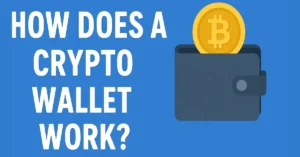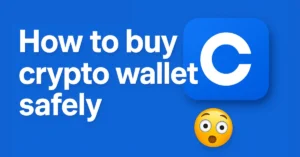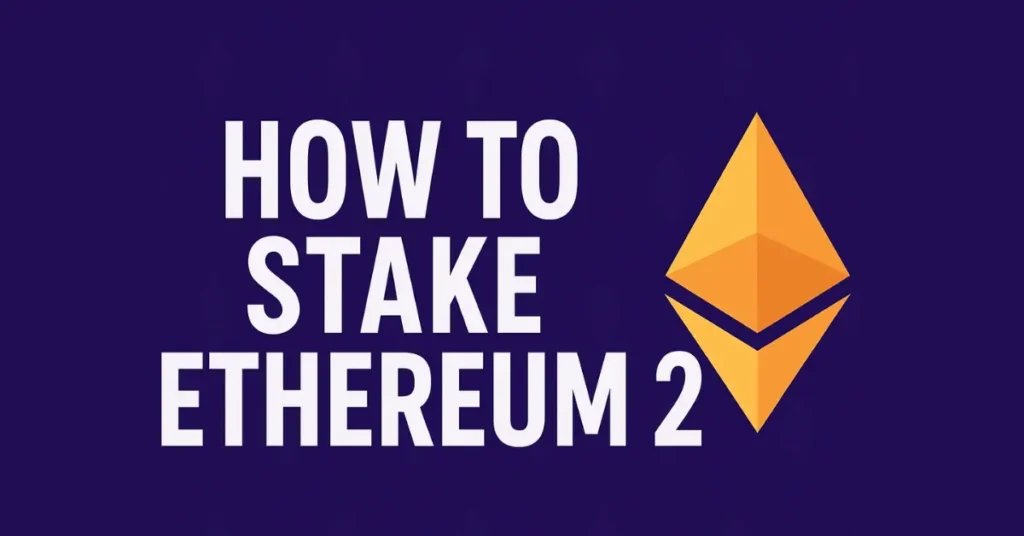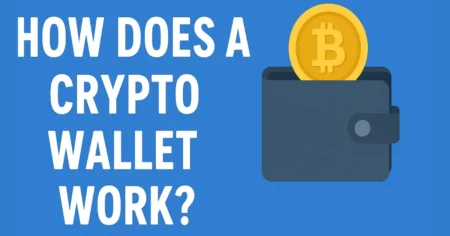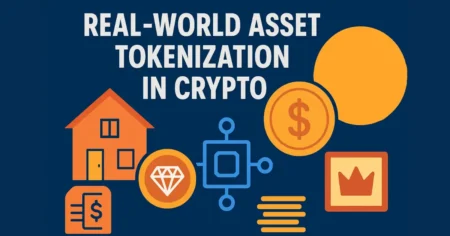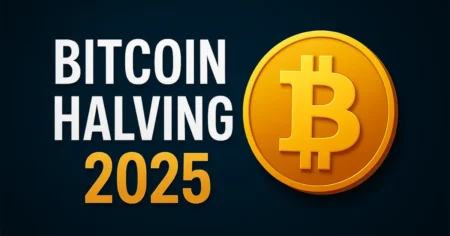How to stake ethereum 2.0
Introduction
Ethereum has been one of the most innovative blockchain platforms since its launch in 2015, powering smart contracts, decentralized applications, and a rapidly growing DeFi ecosystem. But as Ethereum became more popular, it faced a serious challenge: scalability and energy consumption. The original Ethereum blockchain, which relied on Proof of Work (PoW), was secure but extremely energy-intensive, similar to Bitcoin. To address these challenges, Ethereum introduced Ethereum 2.0, also known as the transition to Proof of Stake (PoS).
This upgrade doesn’t just make the network greener—it also introduces the ability for anyone holding ETH to participate directly in securing the network through a process called staking. Staking allows you to lock up your ETH in return for rewards, somewhat like earning interest on your savings account, but with crypto.
In this guide, we’ll walk through everything you need to know about staking Ethereum 2.0—from what it is, how it works, why it matters, to the step-by-step methods of staking, whether you’re doing it on your own, through an exchange, or in a pool.
By the end, you’ll have a clear picture of whether staking ETH is right for you, what risks you need to keep in mind, and how to start safely. If you’re based in the USA, we’ll also touch on tax considerations so you don’t run into issues with the IRS later. Let’s dive in!
What is Ethereum 2.0?
Ethereum 2.0, also known as “The Merge,” represents one of the most important milestones in Ethereum’s history. Previously, Ethereum relied on a Proof of Work system, where miners solved complex puzzles to validate transactions and secure the network. This system was reliable but extremely energy-consuming—comparable to powering entire small countries.
Ethereum 2.0 replaces this with Proof of Stake (PoS), where validators (people who stake ETH) are randomly chosen to validate transactions and create new blocks. Instead of requiring massive amounts of electricity and mining rigs, the network now relies on people locking up ETH as collateral, which is far more energy-efficient and sustainable.
The benefits of Ethereum 2.0 go beyond energy savings. The upgrade makes the network:
- More scalable: Capable of handling thousands of transactions per second.
- More secure: Staking creates economic incentives that make attacks extremely costly.
- More sustainable: By removing mining, Ethereum reduces its carbon footprint dramatically.
For anyone holding ETH, Ethereum 2.0 opens up a new way to earn rewards by actively participating in the network through staking. Instead of just holding ETH in a wallet, you can now “put it to work” and help the network grow.
What Does Staking Ethereum Mean?
In simple terms, staking is like putting your ETH into a digital vault that helps secure the Ethereum network. When you stake ETH, you’re locking it up to become part of the group of validators who confirm transactions and create new blocks.
Here’s how it works:
- Validators are selected at random to propose and validate new blocks of transactions.
- To participate as a validator, you need to stake at least 32 ETH.
- Validators earn rewards in the form of more ETH for doing their job honestly.
- If a validator acts maliciously or tries to cheat, part of their stake can be slashed (taken away).
Think of staking as a partnership between you and the Ethereum blockchain. You’re helping to run the system, and in return, you’re rewarded. Unlike mining, which required expensive hardware, staking can be done with much more modest equipment or even through third-party services.
It’s important to note that staking is not risk-free. Once your ETH is staked, it’s locked up for a certain period, and you won’t be able to sell it immediately. Plus, if you run your validator incorrectly, you risk losing some rewards. However, for long-term ETH holders, staking is an attractive way to earn passive income while supporting the future of Ethereum.
Why Should You Stake Ethereum 2.0?
There are several compelling reasons to stake Ethereum, especially if you’re already holding ETH for the long term.
Earn Passive Income
By staking, you earn regular rewards—similar to interest from a bank savings account. Depending on how much ETH is staked overall, the annual percentage yield (APY) can range anywhere from 4% to 12%.
Strengthen the Ethereum Network
When you stake, you’re helping to decentralize and secure the blockchain. A strong and secure Ethereum network benefits everyone—developers, investors, and users alike.
Contribute to a Greener Crypto Future
Ethereum 2.0 uses far less energy than Proof of Work. By staking, you’re actively participating in making crypto more sustainable.
Hedge Against Inflation
Staking helps offset the inflationary nature of ETH by giving you rewards that grow your holdings over time.
Of course, there are risks. ETH prices can fluctuate wildly, meaning your staking rewards could lose value if ETH’s market price drops significantly. You also need to consider liquidity—staked ETH can’t be withdrawn immediately, which might be a drawback for short-term traders.
Still, for investors who believe in Ethereum’s long-term potential, staking is one of the most effective ways to maximize value from their ETH holdings.
Ethereum 2.0 Staking Requirements
Before you jump in, it’s essential to understand the requirements for staking Ethereum 2.0.
Minimum ETH Requirement:
To become a validator, you need at least 32 ETH. This isn’t pocket change—it’s a significant investment, especially for average retail investors in the USA. At current market prices, this could mean tens of thousands of dollars.
Technical Setup:
Running a validator node requires:
- A computer with strong hardware (multi-core CPU, 16GB+ RAM, SSD storage).
- A stable and fast internet connection (24/7 uptime).
- Knowledge of setting up and maintaining the software.
Risk of Slashing:
Validators who act dishonestly or fail to stay online can be penalized through a process called slashing. This means you could lose some of your staked ETH if your node misbehaves.
Alternative Options:
If you don’t have 32 ETH or don’t want the hassle of running your own validator, you can still stake through staking pools or centralized exchanges. These services let you contribute smaller amounts of ETH while sharing in the rewards.
The bottom line: solo staking requires commitment, technical know-how, and a large upfront investment. But if that feels overwhelming, don’t worry—there are simpler ways to stake ETH, which we’ll cover in the next sections.
Different Ways to Stake Ethereum 2.0
Staking Ethereum 2.0 isn’t a one-size-fits-all process. Depending on how much ETH you own, your level of technical expertise, and how hands-on you want to be, there are several different methods to choose from.
Solo Staking
This is the most direct way to stake ETH. You set up your own validator node by staking the full 32 ETH requirement and running the software yourself. The benefits are full control over your staking rewards and direct participation in securing Ethereum. However, it requires technical know-how, hardware setup, and a willingness to keep your validator online at all times.
Staking through Exchanges
If managing your own node sounds intimidating, exchanges like Coinbase, Binance, or Kraken make staking accessible. You simply deposit ETH, and the exchange takes care of the technical details. While this is easy, you trade off some control, as exchanges take a fee and hold custody of your ETH.
Staking Pools
Staking pools allow investors with less than 32 ETH to combine their holdings with others and collectively run validator nodes. Platforms like Lido, Rocket Pool, and StakeWise are popular choices. With pools, you maintain more flexibility, since many providers issue liquid staking tokens that represent your staked ETH, allowing you to trade or use them in DeFi.
Custodial vs. Non-Custodial Options
Exchanges and some pools are custodial, meaning they hold your ETH for you. Non-custodial solutions like Rocket Pool let you maintain greater control of your funds, which is generally considered safer from a decentralization perspective.
In short, solo staking offers maximum independence, while exchanges and pools prioritize convenience. The best method depends on your investment size, technical comfort level, and risk tolerance.
Step-by-Step Guide to Solo Staking Ethereum
If you’re serious about being a validator and meet the requirements, solo staking is the most rewarding method. Here’s a step-by-step breakdown:
Step 1: Prepare Your Hardware and Internet Connection
A validator needs a reliable computer with strong specs (at least 16GB RAM, SSD storage, and a multi-core processor). Just as important, you’ll need a stable internet connection with near-constant uptime. Even short downtimes can lead to missed rewards or penalties.
Step 2: Install Ethereum Staking Software
You’ll need to run both an execution client (like Geth or Nethermind) and a consensus client (like Prysm, Lighthouse, or Teku). These programs work together to validate blocks and keep your node in sync with the Ethereum blockchain.
Step 3: Generate Validator Keys
Next, use the official Ethereum launchpad (launchpad.ethereum.org) to generate your validator keys. This involves creating secure key pairs and a password-protected keystore file.
Step 4: Deposit 32 ETH
To officially activate your validator, you’ll need to deposit 32 ETH into the staking contract using the launchpad. This is a one-way deposit—you can’t withdraw the funds until Ethereum enables withdrawals (which has gradually been rolled out after The Merge).
Step 5: Monitor and Maintain Your Node
Running a validator isn’t a “set it and forget it” process. You’ll need to regularly update software, monitor performance, and ensure uptime. Some stakers use cloud servers (like AWS or DigitalOcean), though running your own dedicated hardware at home is more decentralized.
Solo staking offers the highest rewards since you keep 100% of your earnings. But it also comes with the greatest responsibility—slashing penalties are real, and any mistakes in setup can be costly.
Using Staking Pools for Ethereum 2.0
Not everyone can afford or wants to stake 32 ETH. That’s where staking pools come in, making staking accessible to almost anyone.
What is a Staking Pool?
A staking pool is a platform that aggregates ETH from multiple users to collectively meet the 32 ETH requirement and run validator nodes. You stake as little as 0.01 ETH, and in return, you earn proportional rewards.
How Do Pools Work?
When you stake with a pool like Lido or Rocket Pool, the platform handles validator operations on your behalf. In return, you get a “liquid staking token” (for example, stETH from Lido or rETH from Rocket Pool) that represents your staked ETH plus rewards. You can use these tokens in DeFi lending, yield farming, or trading, which adds extra flexibility compared to traditional staking.
Pros of Staking Pools:
- Lower entry barriers (no need for 32 ETH).
- Less technical work—no need to manage your own node.
- Flexibility with liquid staking tokens.
Cons of Staking Pools:
- You rely on the pool operator’s honesty and performance.
- Some charge higher fees compared to exchanges.
- Slightly less decentralized than solo staking.
For most retail investors in the USA, staking pools strike the right balance between accessibility, flexibility, and returns. They’re especially appealing if you want to keep your ETH liquid while still earning rewards.
Staking Ethereum on Exchanges
Centralized exchanges have made Ethereum staking incredibly simple. If you already use an exchange to buy ETH, staking usually takes just a few clicks.
Popular Exchanges Offering ETH Staking in the USA:
- Coinbase: Known for its user-friendly interface. However, it charges relatively high fees (up to 25% of rewards).
- Kraken: Offers ETH staking with more competitive fees than Coinbase and a solid track record of security.
- Binance.US: Available in limited U.S. states, but it offers flexible staking options and decent rewards.
Advantages of Exchange Staking:
- Extremely easy to set up (no technical expertise required).
- Low minimum requirements—you can stake fractions of an ETH.
- Rewards are automatically distributed.
Drawbacks:
- High fees compared to staking pools or solo staking.
- You don’t control your private keys, meaning you’re trusting the exchange.
- Exchanges can face regulatory scrutiny in the USA, which may affect services.
If convenience is your top priority, exchanges are the easiest way to get started. However, if decentralization and maximizing returns matter more to you, a staking pool or solo staking may be better long-term.
Risks of Staking Ethereum 2.0
While staking ETH can be profitable, it’s important to understand the risks before diving in.
Slashing Risks
If you’re solo staking and your validator behaves incorrectly—such as double-signing transactions or going offline—you may be penalized through slashing, which means losing part of your staked ETH.
Liquidity Concerns
When you stake ETH, it’s locked up and can’t be withdrawn immediately. While Ethereum now allows withdrawals in phases, depending on the demand, it may take days or weeks to access your funds. This lack of liquidity could be a problem if you need cash quickly.
Market Volatility
Even if you’re earning staking rewards, the value of ETH can drop significantly. For example, if ETH falls by 50%, your rewards may not offset the loss in value.
Custodial Risks
If you’re staking through exchanges or centralized providers, you’re trusting them with your ETH. Hacks, mismanagement, or regulatory actions could put your funds at risk.
Opportunity Cost
Once ETH is staked, it can’t be used elsewhere—unless you use liquid staking tokens. If other investment opportunities arise, your funds may be locked in.
Understanding these risks helps you choose the staking method that aligns with your risk tolerance. For many U.S.-based investors, using reputable pools or exchanges reduces complexity while balancing safety.
How Much Can You Earn from Staking Ethereum?
One of the most common questions people ask before staking Ethereum is: “How much money can I make?” The answer depends on several factors, including how much ETH you stake, the total number of validators on the network, and the method you use to stake.
Average Returns (APY):
Ethereum staking typically yields between 4% and 7% annually, but this rate fluctuates. When fewer people stake, the network pays higher rewards to encourage participation. As more validators join, the rewards get spread thinner. This means your earnings can vary over time.
Example Calculation:
If you solo stake 32 ETH and the annual reward rate is 5%, you could earn around 1.6 ETH per year (before fees).
In a staking pool or exchange, fees can reduce your rewards by 10% to 25%. For example, if you earned 1.6 ETH in rewards, you might actually keep around 1.2–1.4 ETH after fees.
Factors Affecting Rewards:
- Network Participation – The more validators, the lower the reward percentage.
- Uptime of Validator Node – If your node goes offline, you’ll miss rewards (applies mostly to solo staking).
- Staking Method – Pools and exchanges often take fees, while solo staking gives you the full amount.
- Market Price of ETH – Even if you earn rewards, the dollar value depends on Ethereum’s market performance.
Reward Calculators:
Several online calculators, such as those from StakingRewards.com or the Ethereum Foundation, can help estimate returns based on your chosen method.
Ultimately, while staking rewards may not make you rich overnight, they offer a steady way to grow your ETH holdings passively—especially if you’re a long-term believer in Ethereum.
Tax Implications of Staking Ethereum in the USA
If you’re staking Ethereum in the United States, taxes are something you can’t ignore. The IRS treats staking rewards as taxable income, which means you’ll need to report them correctly to stay compliant.
How Rewards Are Taxed:
When you receive ETH rewards from staking, the fair market value (FMV) of that ETH at the time you received it is considered ordinary income.
For example, if you earned 0.5 ETH as a staking reward when ETH was worth $2,000, you’d report $1,000 as income.
Selling or Exchanging Rewards:
Later, if you sell or trade your staking rewards, you’ll also be subject to capital gains tax. The IRS distinguishes between short-term and long-term gains, depending on how long you’ve held the ETH.
Reporting Staking Rewards:
You’ll need to report staking income on your tax return, usually under Schedule 1 (Additional Income) or directly as part of your 1099 if your exchange provides one. Unfortunately, not all exchanges issue detailed tax documents, so you may need crypto tax software.
Helpful Tools for Tax Filing:
Platforms like CoinTracker, Koinly, and TokenTax make it easier to track staking income and generate tax forms. These tools automatically sync with your wallets and exchanges to calculate taxable events.
State-Level Considerations:
Depending on your state of residence, you may also owe state income tax on staking rewards. For example, states like California and New York tax crypto earnings at high rates, while states like Texas or Florida have no state income tax.
The key takeaway: staking ETH is profitable, but don’t forget Uncle Sam wants his share. To avoid penalties, keep accurate records of all your staking activity, including dates, amounts, and market values.
Future of Ethereum Staking
Ethereum staking is still evolving, and the future looks promising. Since The Merge, Ethereum has been operating entirely on Proof of Stake, but that’s just one piece of the roadmap.
Sharding and Scalability
One of Ethereum’s biggest upcoming upgrades is sharding, which will split the blockchain into multiple smaller “shards” to handle transactions in parallel. This could dramatically increase transaction throughput and reduce fees. For validators, sharding may change how staking works, making it more efficient and possibly leading to even higher adoption rates.
Increasing Accessibility
As staking pools, exchanges, and DeFi platforms refine their services, staking ETH will become even more user-friendly. We’re likely to see more liquid staking tokens, which provide flexibility and reduce the liquidity issue of locked ETH.
Regulatory Developments in the USA
The future of staking also depends on regulation. U.S. authorities are paying closer attention to staking services offered by exchanges. For example, the SEC has already scrutinized some platforms, which could impact how staking is offered in the future. However, decentralized staking pools like Rocket Pool are harder to regulate and may remain widely available.
Long-Term Outlook
Staking is expected to become a core feature of Ethereum’s ecosystem, with institutional investors likely to play a larger role. As Ethereum cements itself as the backbone of Web3, demand for ETH staking should grow, potentially making rewards more stable over time.
In short, Ethereum staking is not just a short-term opportunity—it’s a long-term investment in the future of the network. Those who get involved now may benefit from being early participants in this shift toward a greener, more scalable blockchain.
Common Mistakes to Avoid When Staking Ethereum
While staking Ethereum sounds straightforward, many beginners make costly mistakes that reduce their earnings—or worse, cause them to lose funds. Knowing these mistakes ahead of time can save you a lot of trouble.
Choosing Unreliable Platforms
One of the biggest risks is staking through shady or unproven platforms. Some websites promise sky-high returns but turn out to be scams. Always stick with reputable providers like Lido, Rocket Pool, or trusted exchanges such as Kraken. Do your research before committing your ETH.
Ignoring Security Best Practices
When staking, especially with solo setups, security is everything. Weak passwords, failing to back up your keys, or storing your credentials on an unsecured device can put your ETH at risk. Always use hardware wallets, two-factor authentication, and cold storage for keys when possible.
Underestimating Technical Requirements
Running your own validator node requires a strong internet connection, updated software, and constant monitoring. Some users assume they can set it up once and forget it—but downtime leads to missed rewards and potential slashing penalties.
Not Understanding Lock-Up Periods
Many investors rush into staking without realizing their ETH may be locked for months before withdrawal is possible. Even with liquid staking tokens, there are risks if those tokens lose value. Always check the terms before staking.
Overcommitting Funds
Never stake ETH you might need in the short term. Since staking locks up funds, you could be forced to sell other assets at a loss if you need liquidity. Treat staking as a long-term commitment, not a quick-profit strategy.
By avoiding these mistakes, you’ll maximize your rewards, protect your investment, and ensure a smoother staking experience.
Conclusion
Ethereum 2.0 has transformed the way the network operates, replacing energy-intensive mining with a more sustainable, efficient system—Proof of Stake. For ETH holders, this transition created an exciting opportunity: staking.
Whether you’re a solo staker running your own validator, joining a staking pool, or opting for the convenience of an exchange, staking offers a way to grow your ETH holdings while directly supporting the Ethereum network. Along the way, you’ll enjoy rewards, contribute to decentralization, and take part in one of the most important evolutions in blockchain history.
That said, staking isn’t risk-free. From slashing penalties to market volatility and tax obligations in the USA, you need to approach it with awareness and caution. By choosing the right staking method for your needs, avoiding common mistakes, and staying informed about Ethereum’s roadmap, you’ll position yourself for long-term success.
In the end, staking Ethereum isn’t just about making money—it’s about investing in the future of decentralized finance and Web3. If you believe in Ethereum’s long-term vision, staking is one of the smartest moves you can make today.
FAQs
Can I stake Ethereum with less than 32 ETH?
Yes. You can join staking pools like Lido or Rocket Pool, or use exchanges such as Coinbase and Kraken. These options let you stake small amounts while still earning proportional rewards.
Is staking Ethereum safe?
It’s generally safe if you use reputable platforms. However, risks include slashing penalties (for solo stakers), platform hacks (for custodial staking), and ETH price volatility. Always do your research and never invest more than you can afford to lose.
How long is Ethereum locked when staked?
Withdrawals from the Ethereum staking contract are now enabled after The Merge, but depending on network demand, it may take some time for your withdrawal request to process. Pools and exchanges may also have their own lock-up periods.
How much can I earn from staking ETH?
Returns vary but typically range from 4% to 7% annually. Your actual rewards depend on network participation, the method you choose (solo, pool, exchange), and fees charged by third-party providers.
Do I have to pay taxes on Ethereum staking rewards in the USA?
Yes. The IRS treats staking rewards as taxable income. You’ll need to report the fair market value of your rewards at the time you received them. Later, if you sell or trade those rewards, you’ll also be subject to capital gains tax.
Also, read
- What is a crypto wallet, and how does it work? – Coinsify
- 10 Crypto Terms Every Beginner Must Know: Coinsify
- What is blockchain technology? Complete Guide – Coinsify
- How to Buy Crypto Safely in 2025: Complete Guide – Coinsify
- Bitcoin vs Ethereum: Key Differences Explained: Complete Guide
- Ultimate Blockchain Glossary: Learn Blockchain Terms Easily
- How to Buy Bitcoin Safely (Complete Beginner’s Guide)
- Top 10 Crypto Wallets for Beginners (2025 Edition)
- What is cryptocurrency? A Beginner-Friendly Guide (2025)
